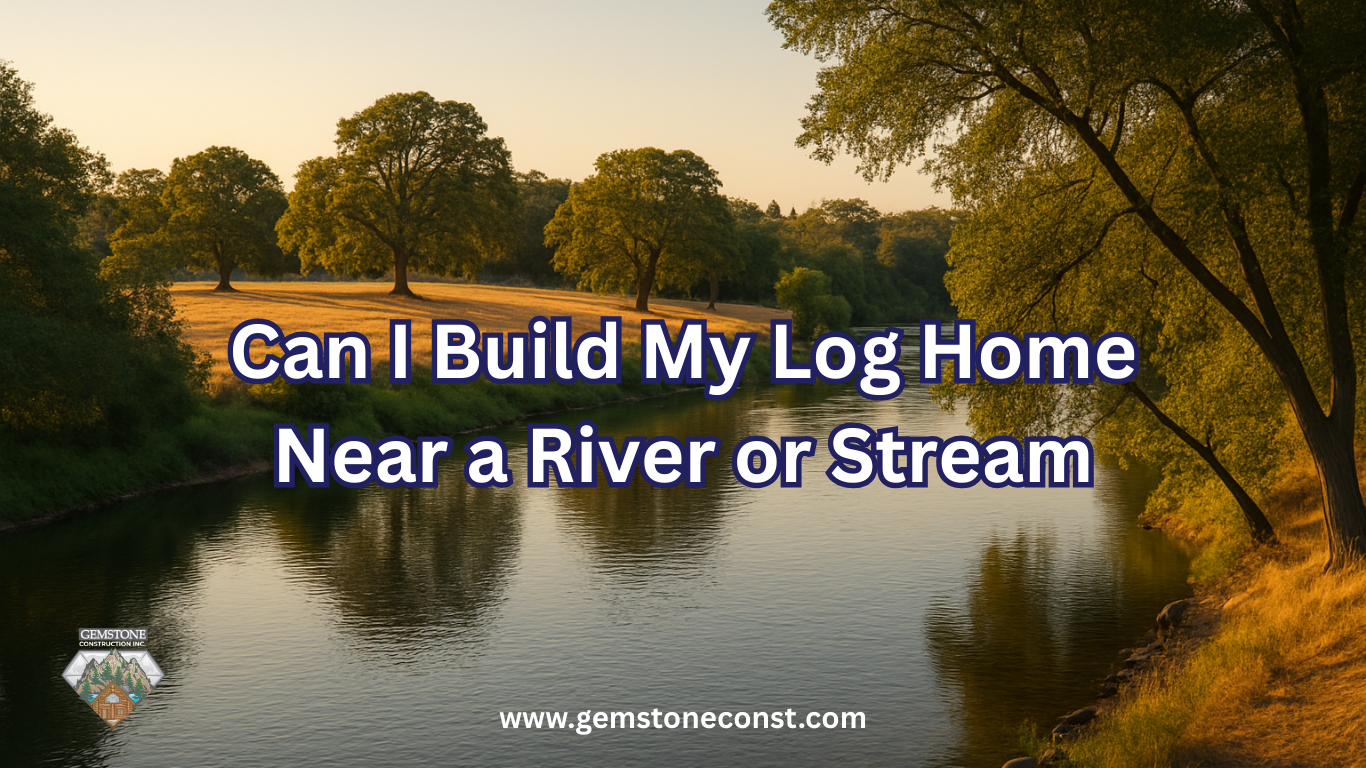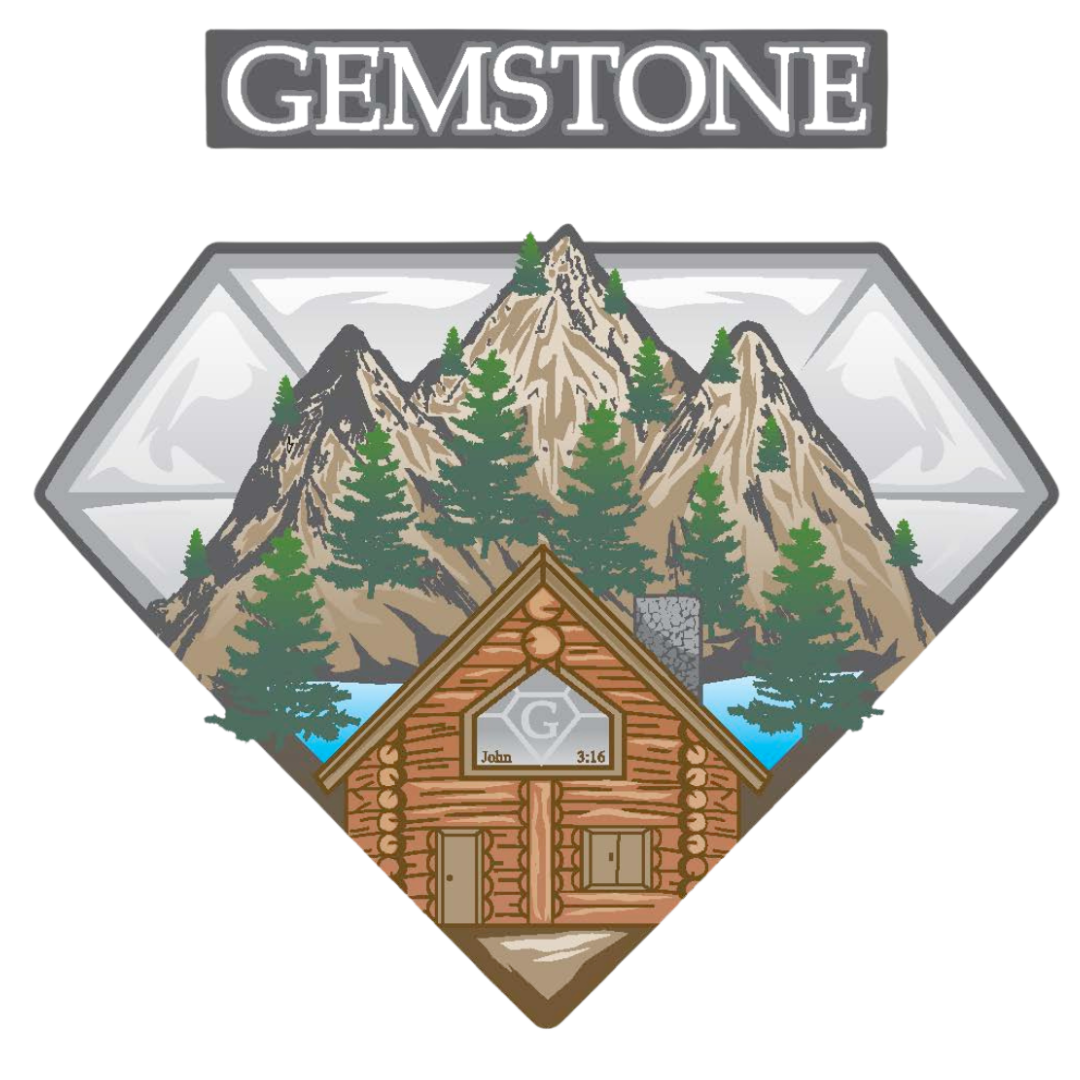GemStone Construction Blog
Can I Build My Log Home Near a River or Stream?
August 12, 2025 | Gemstone Construction | Sacramento, CA | USA

What to know before you plan
Rivers and streams are beautiful, and they sell the dream fast. But the ground next to moving water is regulated for good reasons. It protects fish, banks, and people. Every county treats distance from the bank a little differently, and the state adds its own permits on top. Start early, read the map, and you will save months. If energy saving upgrades are already on your list, great. That planning mindset helps here too, because small choices at the start make big differences later.
Here is the plain truth for California work near water. If your project might change a bed, a bank, or the flow, the California Department of Fish and Wildlife can require a Lake or Streambed Alteration Agreement. That notice step applies even when creeks run dry part of the year. You will also hear about federal permits that deal with placing fill or doing work in waters of the United States. On many projects you need state water quality sign-off as well. Use the FEMA Flood Map Service Center to see flood zones before you put a pin on a plan. Sacramento County’s General Plan also calls out a functional one hundred foot buffer along many stream corridors, which is a strong clue about local distance expectations even before you meet staff.
FAQs about building near rivers and streams
Before we dive into the questions, a quick note helps. Setbacks are not punishment. They are a safety belt for your investment and your neighbors. Buffers keep banks stable, filter runoff, and lower flood risk. Done right, they also make the home feel more private. Add patience, and the process becomes manageable.
The answers below reflect what people in Northern California ask most when a river view enters the plan. The goal is to help you speak the same language as the counter staff on your first visit. When you show up with maps, photos, and a simple sketch, you get better feedback. You also leave with a clearer list of steps. That saves time and money.
How close can I place the cabin to a river or creek?
There is no single number that fits every property. Counties set their own buffers, and then staff look at bank height, soil, and habitat to fine tune the line. In Sacramento County, the General Plan points to a functional one hundred foot setback along many stream corridors. That does not mean every parcel is the same, but it shows the scale planners have in mind. If your lot has a tall bank or an old levee, the practical line may sit farther back. If the bank is armored and habitat is poor, you may be able to do more with careful design. Always walk in with a site map that marks the top of bank, the edge of riparian trees, and any old flood marks you can see. Bring recent photos after a big rain if you have them, because that picture helps everyone understand how water behaves on your land.
What permits do I need if my driveway or utilities cross a stream channel?
Any work that changes a bed or bank, such as a culvert, a small bridge, or trenching near the channel, can trigger a Lake or Streambed Alteration Agreement with the California Department of Fish and Wildlife. The program covers creeks that dry up part of the year, not just the ones that run all year. For crossings that place fill or reshape the channel, federal law can also apply through the Clean Water Act Section Four Hundred Four program. That is the permit path for placing dredged or fill material in waters of the United States, and it is managed by the U S Army Corps of Engineers with oversight from the U S Environmental Protection Agency. In many cases you also need a state Water Quality Certification under Section Four Hundred One, handled by the State Water Resources Control Board or your Regional Water Board. The easy way to think about it is simple. If you touch the channel or change the water, plan on a state streambed step, a federal fill step, and a water quality step. Start those conversations before you draw the final driveway.
How do I check flood risk on my parcel before I design the floor plan?
Pull the FEMA Flood Map for your address and save the PDF. That map shows the Special Flood Hazard Area and the Base Flood Elevation if your site is mapped. If the parcel is in a flood zone, plan on raising the finished floor above the mapped elevation and keeping mechanical gear out of the splash zone. Even if the lot is outside the line, look carefully at where water would actually go during a stalled storm or a snowmelt pulse. Bring the map to your first talk with planners and your surveyor. If you are close to the line, an elevation certificate can prove the ground sits higher than the model and may simplify insurance. Consider simple design moves that cut risk, like tucking the cabin on the higher shoulder of the site, using deep rooted native plants near the bank, and routing paths away from the lowest swales. These small calls protect comfort and lower costs later on your log cabin design.
Do riparian buffers mean I cannot touch trees or fix erosion?
Buffers are not a ban. They are a rule set that tries to keep the green belt working like a sponge and a brace. You can often remove hazardous trees with a permit, trim branches over a roof, and control invasive plants that choke the bank. You can also armor active erosion if you do it with the right method and plan the timing around fish runs. Expect the county to ask for a simple plan that shows where work happens, how you will keep dirt out of the water, and what you will plant when the work is finished. In many places bioengineering is preferred, which means plant based methods that hold soil while roots take over. The key is to speak up early, pick a method that fits the bank, and follow your permit notes. This is how you protect the stream and your home at the same time.
Will building near water change my insurance or my budget?
Yes, sometimes in ways that surprise people. If any part of the home sits in a mapped flood zone, your lender will likely require flood insurance, and that cost can be meaningful. Raising the pad and moving equipment to higher ground can reduce that number. Outside the mapped zone, some owners still choose a modest flood policy for peace of mind. Plan for extra survey, extra review time, and possibly a soils report that dives deeper than a dry hillside site would need. On the flip side, a smart layout that keeps the cabin on the higher half of the lot can save money because you avoid tall stem walls, special waterproofing, and long spans for decks. When you plan the layout with energy saving upgrades in mind, like better glass and a right sized heat pump, the long term bills also move down, which helps the full picture pencil out.
Do state or federal rules apply even if my creek is dry most of the year?
Yes. California’s streambed law looks at the presence of a channel and fish and wildlife resources, not just year round flow. If you place a culvert, reshape a bank, or trench for utilities across the channel, the notice step can still apply. Federal rules can also reach seasonal channels depending on how they connect to downstream waters and how the current definition of waters of the United States applies. In practice, that means you should ask before you act. Describe the work, share a simple sketch, and attach a few photos that show the bed and bank. You will get clear guidance on whether you need a notification to the state, a federal permit step, a state water quality sign off, or all three. Getting that answer in writing protects you and keeps the review team on the same page.
Next steps and local tips
Give yourself a weekend to collect the basics. Print the FEMA map, mark the top of bank, and snap photos after a rain if you can. Bring that packet to the county counter and ask where they measure the setback on your parcel. Ask if the county has any stream corridor guidance you should read at home. In Sacramento County, policy language about functional one hundred foot buffers gives you a feel for the scale of space that protects the bank and wildlife while keeping homes safe. That early read saves redraw fees and avoids backtracking later.
When you pick a homesite, think about comfort year round, not just the view on move in day. A site a little farther from the water often gets better sun in winter and better breeze in summer. That choice also pairs well with smart energy moves like tight shells, clear thinking window choices, and right sized HVAC. Those upgrades lower bills and help the plan pass smoothly because they show you are thinking about the whole picture, not just the porch. When you are ready, talk to the team, share your packet, and let us help you balance the dream with the rules that keep Sacramento’s rivers healthy.
Ready to map a riverside plan the right way?
Contact Gemstone Construction for a friendly review of your site and a clear path to permits and design.
References:
- California Department of Fish & Wildlife, Lake and Streambed Alteration Program
- California State Water Resources Control Board, 401 Water Quality Certification and Wetlands Program
- FEMA, Flood Maps
- Sacramento County Planning, Land Use Regulations
About Gemstone Construction
Gemstone Construction is a premier custom home and commercial building contractor serving Northern California, including the Sacramento area. Specializing in
custom log homes,
luxury home builds,
residential metal building construction, commercial construction and
commercial metal building construction. We bring craftsmanship, attention to detail, and personalized service to every project. From designing dream homes to building cutting-edge commercial spaces, our dedicated team ensures that each build reflects our clients' unique vision and exceeds expectations. Trust Gemstone Construction to transform your ideas into reality with integrity and excellence.
Learn more about Gemstone Construction

Contact Information


